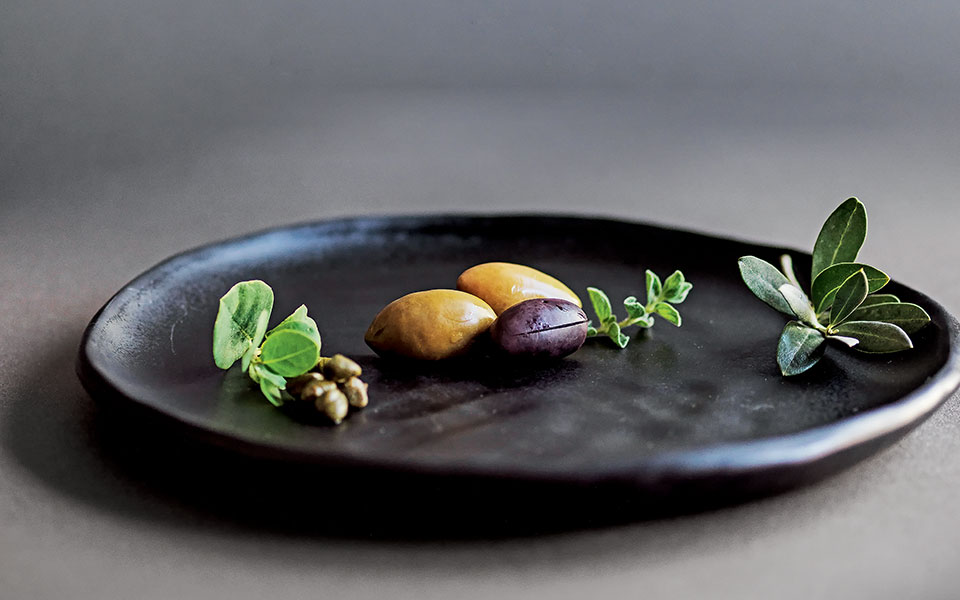
Sacred fruit
No other fruit expresses Greece as completely as the olive. From the time when the goddess Athena was said to have planted an olive tree on the hill of the Acropolis, olives have played a significant part in Greece’s cultural and culinary heritage, in the Mediterranean diet and in the local economy. This marvelous fruit is an economic powerhouse, as a full 60 percent of Greece’s cultivated land is, in fact, dedicated to olive groves. From dozens of varieties that grow in the country, around 10 are used today to make oil, the foremost of which is the famed Koroneiki variety. Another 10 or so are used as table olives, most notably those from Kalamata. But other varieties are worth trying, too; there are olives that are dried, pickled in vinegar, or served with a dash of lemon and oregano.
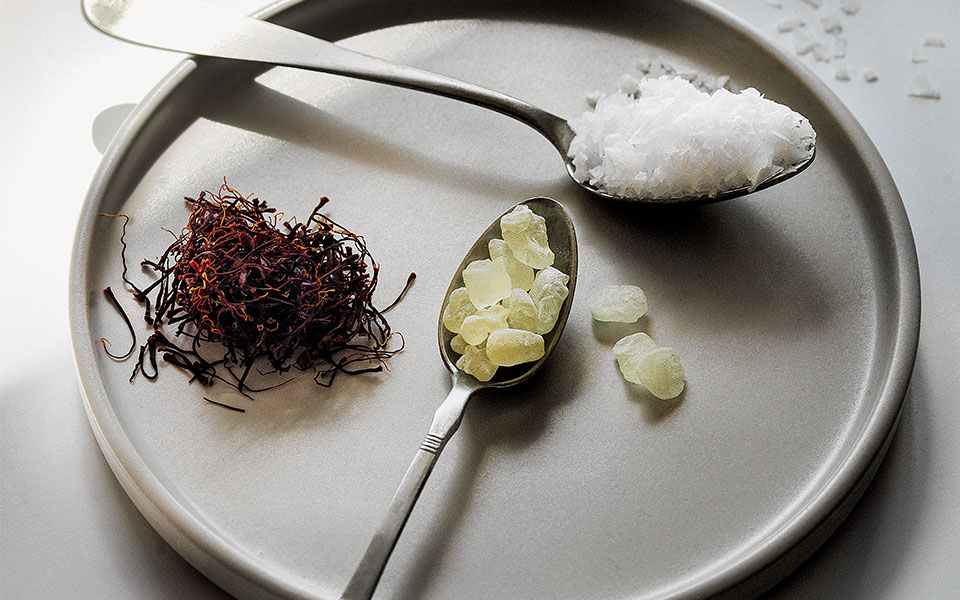
Invaluable and unique
It takes just a few thin threads of Kozani saffron to turn a simple dish into a fragrant golden delicacy, while a pebble-sized chunk of mastic gum from Chios suffices to flavor several batches of dough, and a pinch of Messolongi fleur de sel adds depth to any dish. All three of these products are painstakingly produced in (and are unique to) Greece. People spend hours picking the crocus flowers and separating the saffron threads in northern Greece, and collecting the gum from mastic trees on the eastern Aegean island, while in western Greece, workers scoop up salt from expansive salt flats. Saffron and mastic are renowned for their medicinal properties, and the salt is an important source of minerals. But beyond the health benefits they offer, these are all amazing products worth splashing out on for their taste alone.
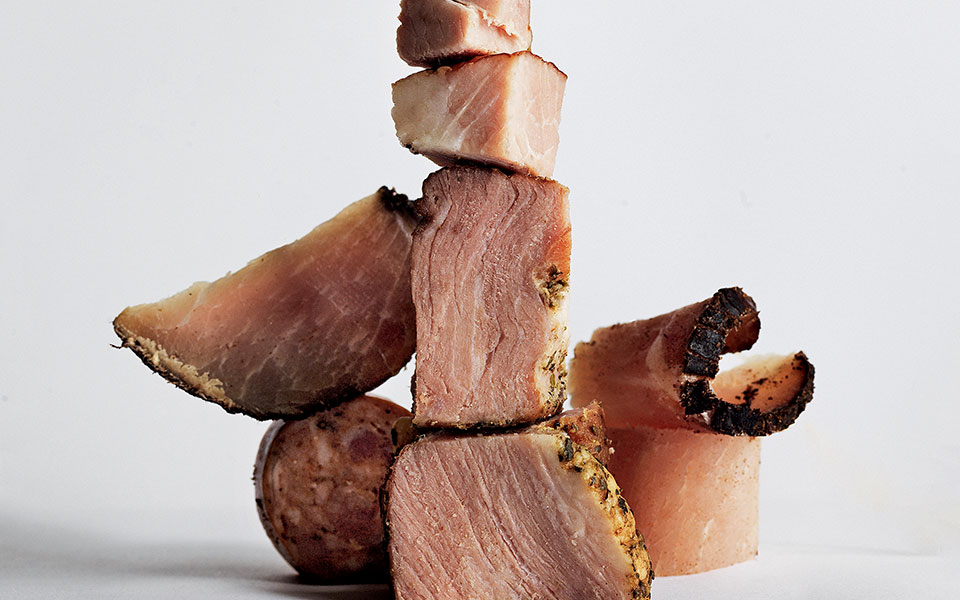
carefully crafted
From the Ionian Islands to Crete, and from the Cyclades to Macedonia, you’ll find recipes for curing meat that draw on a historic tradition that has never been broken. Long ago, the people of these lands learned to use spices, vinegar, olive oil, smoke curing and herbs to preserve, for home use, precious cuts of meat from their animals. Today, with the same recipes, artisan businesses across Greece produce delicious meat treats that are naturally matured, and are typically served with alcoholic drinks. Look for the different regional types of cured meat, such as louza from Mykonos, syglino from Mani, apaki from Crete, or nouboulo from Corfu, and enjoy them with tsipouro, a pomace brandy, or wine.
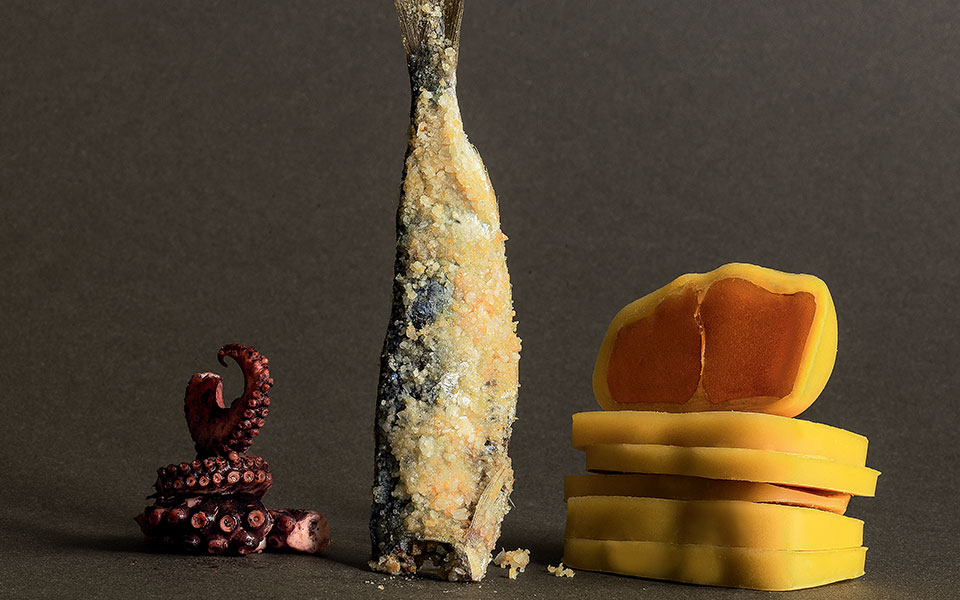
So Greek
If there’s one type of food that brings Greece to mind, it’s the country’s amazing salted, pickled or sun-dried seafood. From the scrumptious sardines of the Aegean Sea to the small, sun-dried octopuses served on the Cycladic islands or the roe of flathead grey mullet used to make Greece’s famous avgotaracho (bottarga), there’s a trove of incredible meze here that’s perfect with ouzo or tsipouro.
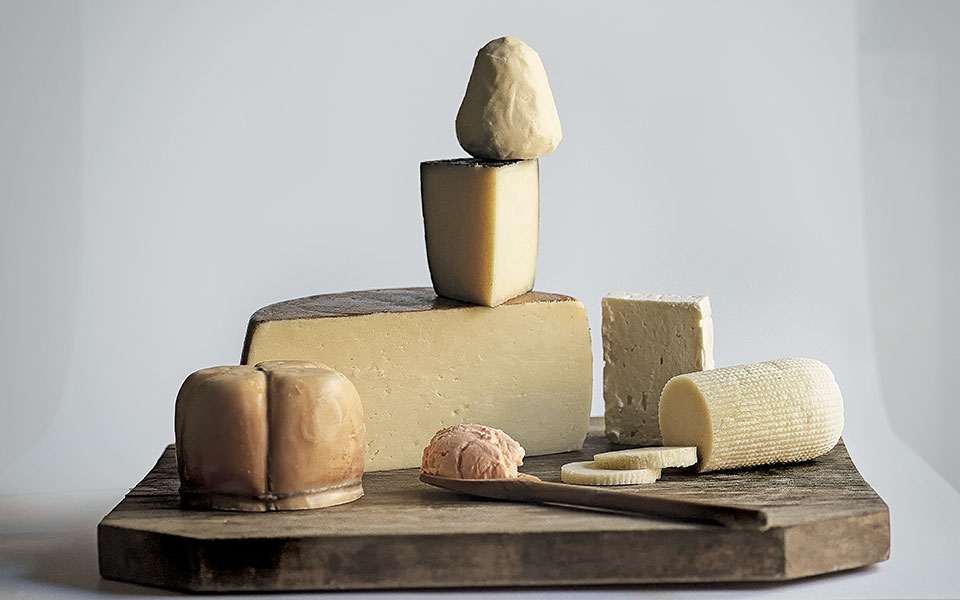
say cheese
Greek dairy farms have an outstanding primary ingredient in the milk that comes from the flocks of goats and sheep grazing freely on the plateaus of Crete, in the meadows of Naxos or on the green hillsides of Macedonia and Epirus. Even smaller Cycladic islands, which lack extensive fertile pastures, turn out some of the country’s most important cheeses, the production of which is limited but which boast high nutritional value and terrific flavor. Greece produces a number of notable cheeses using traditional methods. On Lesvos, spicy ladotyri is matured in olive oil; on Kos crumbly krasotyri ages in wine lees; on Limnos, tangy kalathaki is matured in small wicker baskets; and in Kozani, buttery aeromanoura is left to dry naturally in the open.
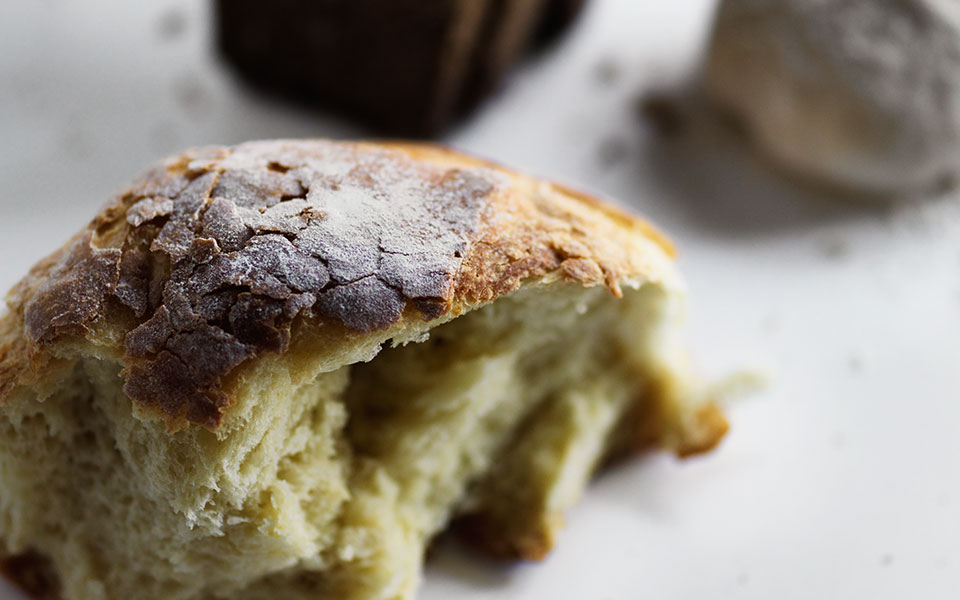
sine qua non
A meal is never complete without bread. Greeks even eat bread with pasta. In the morning, a slice of bread is spread with thyme honey, or some homemade jam. At lunch, we dip chunks of bread into the olive oil at the bottom of a Greek salad. If we feel hungry in the afternoon, we have some bread and cheese. A fried egg with a runny yolk becomes a full meal with a little bit of bread, while an entire category of dishes, the ladera, oven-baked or casseroled vegetables cooked in olive oil, cannot be truly enjoyed without a few slices from a fresh loaf of bread, ideally sourdough.
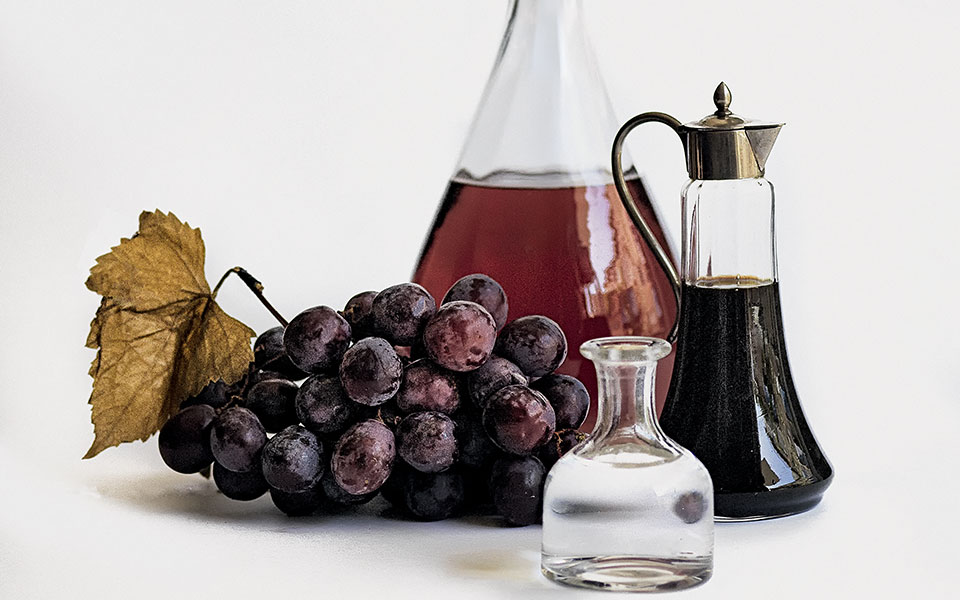
best of the bunch
Vineyards have been generous to the Greeks since time immemorial. Some grapes are grown especially for vinification, yet the same fruit produces several noteworthy byproducts. Grape must, from the crushing and pressing of the grapes before the vinification process, is used as a base for desserts. Boiling the must produces petimezi, a highly concentrated sweet molasses which is used to add flavor to pancakes or in cooking and pastry making. The pomace (grape pulp) is used to make spirits such as tsipouro. Vineyards also provide different types of raisins, including those from Corinth and Zakynthos, both of which have protected designation of origin (PDO) status. Fresh grapes can be made into preserves, and vine leaves are used for dolmas.
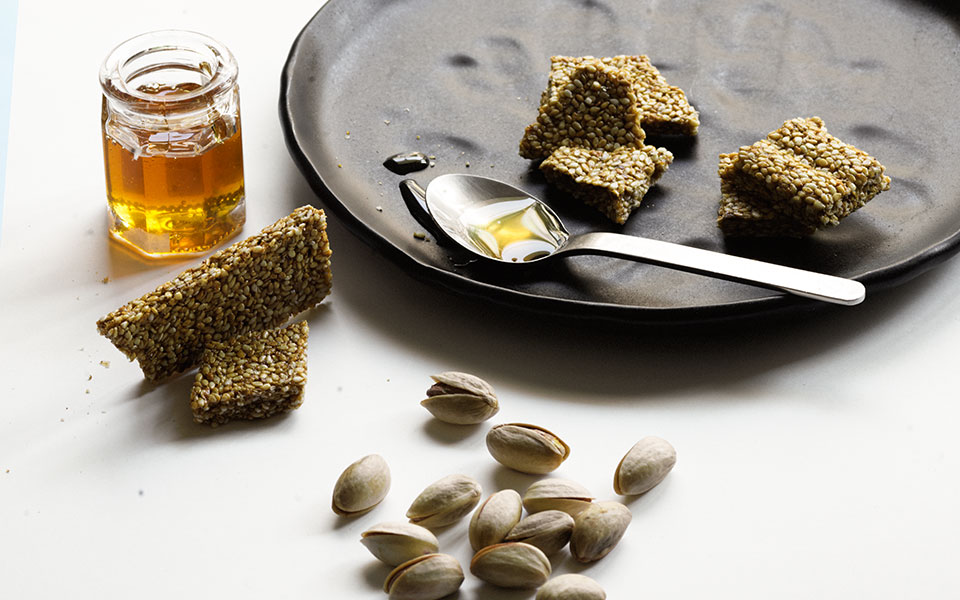
snack attack
Greek honey is unrivaled in terms of quality, with an exquisite aroma and very high nutritional value. The most popular type is produced from wild thyme, whose flowers bees find irresistible. Another notable type comes from fir trees – milky white and thick in texture, it enjoys PDO status as Mainalo Vanilla Fir Honey. A spoonful of honey with some dried nuts is enough to provide a real energy boost; try a combination of wildflower honey with walnuts from Feneos or peanuts from Phthiotis, or the mildly bitter honeys from chestnut trees or heather with almonds from Thessaly or pistachios from Aegina. With honey and sesame seeds, you can make your own energy bars. This treat is known all over Greece as pasteli, except in Rhodes, where they call it melekouni.










